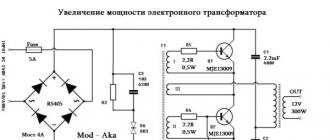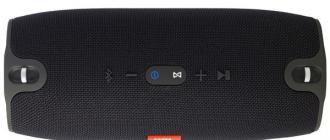Instructions
Before transferring personal data and passwords to a flash drive, you should take care of the reliable protection of the media. The type of protection largely depends on what kind of information and in what form you want to protect. If you just need to close a few files from outsiders, you can use the usual WinRar archiver program. This method is well suited when you need to transfer information through third hands once and at the same time protect the transmitted data from the accidental curiosity of strangers.
To do this, you need to create a separate new folder on the flash drive, into which the protected files should be transferred. Then, by clicking on it with the right mouse button, select the item "Add to archive" in the drop-down context menu. In the window that opens, you need to go to the "Advanced" tab, which will have the "Set password" option. After that, you need to enter the password twice in the proposed field and, for reliability, check the box "Encrypt file names". The password can be sent by (SMS) or by e-mail to the final addressee. This method is not very reliable, but it is convenient for one-off cases due to its simplicity.
A more serious protection option involves setting a password for the entire flash drive at once. This is a more complex method and requires the use of special software, but its high and long-term use justifies all efforts. Its principle of operation is based on the creation of an encrypted virtual disk (volume) on a flash drive, which looks like an ordinary single file before entering the password. The big advantage of an encrypted disk is that it cannot be viewed from the outside, it is impossible to find out which directories are inside.
There are several programs that create virtual encrypted disks. The most convenient of these by far is probably TrueCrypt. It can be downloaded from the manufacturer's website ( http://www.truecrypt.org/downloads). The program is in English, so it is more convenient to immediately install a crack, which can also be downloaded from the website ( http://www.truecrypt.org/localizations). TrueCrypt should initially be installed on your computer's hard drive rather than directly onto a flash drive. The program is unpacked and installed automatically, without requiring any special settings.
After installing TrueCrypt on your hard drive, you need to launch it and insert your flash drive into the USB port. First of all, the flash drive will have to be formatted, so you should take care of preserving the information on it in advance. After formatting, start creating a virtual disk. In the menu of the TrueCrypt program, select the item "Create encrypted file container" and then the item "Normal volume".
The program will ask for the address to place the volume. Select your flash drive from the File menu (usually drive E) and give the new volume a name (whatever you like). The size of the volume should be slightly less than the size of the flash drive. Next, at the request of the program, enter your password. In order not to make mistakes when re-entering the password, it is convenient to use the "Show password" option. As a result, an encrypted container in the form of a single file will be obtained on a flash drive, in which any information can be stored. After entering the password, it opens like a regular logical disk.
We often have to use removable media to store personal files or valuable information. For these purposes, you can buy a USB flash drive with a keyboard for a pin code or a fingerprint scanner. But such a pleasure is not cheap, so it is easier to resort to software methods for setting a password on a USB flash drive, which we will talk about later.
To set a password for a portable storage device, you can use one of the following utilities:
- Rohos Mini Drive;
- USB Flash Security;
- TrueCrypt;
- Bitlocker.
Not all options may work for your flash drive, so it's best to try a few of them before giving up on the task at hand.
Method 1: Rohos Mini Drive
This utility is free and easy to use. It will not protect the entire drive, but only a certain section of it.
To use this program, do the following:


By the way, with Rohos Mini Drive you can set a password for a folder and some applications. The procedure will be exactly the same as described above, but all actions are performed with a separate folder or shortcut.
Method 2: USB Flash Security
This utility in a few clicks will allow you to password protect all files on the USB flash drive. To download the free version, on the official website you need to click the button "Download Free edition".
And to take advantage of the ability of this software to put passwords on flash drives, do the following:


Now you can dump the files you previously transferred to your computer back to the USB stick. When you re-insert it, it will be password protected again, and it does not matter if this program is installed on this computer or not.
Method 3: TrueCrypt
The program is very functional, it probably has the largest number of functions among all the software samples presented in our review. If you wish, you can password not only the USB flash drive, but also the whole hard drive. But before taking any action, download it to your computer.
Using the program looks like this:
- Run the program and press the button "Create volume".
- Check it out "Encrypt non-system partition / disk" and press "Further".
- In our case, it will be enough to create "Regular volume"... Click on "Further".
- Select your USB stick and click "Further".
- If you choose Create and Format Encrypted Volume, then all data on the media will be deleted, but the volume will be created faster. And if you choose "Encrypt partition in place", the data will be saved, but the procedure will take longer. Having made your choice, click "Further".
- IN "Encryption settings" it's best to leave everything as default and just click "Further"... Do it.
- Make sure the indicated media size is correct and press "Further".
- Enter and confirm the password you have invented. Click on "Further"... We also recommend specifying a key file that can help recover data if the password is forgotten.
- Select your preferred file system and click "Place".
- Confirm the action by clicking the button "Yes" in the next window.
- When the procedure is over, press "Exit".
- Your flash drive will look like the one shown in the photo below. This also means that the procedure was completed successfully.
- You don't need to touch it. An exception is when encryption is no longer required. To access the created volume, click "Autowiring" in the main window of the program.
- Enter your password and click "OK".
- In the list of hard drives, you can now find a new drive, which will be available if you insert a USB flash drive and run the same autowiring. When you have finished using the procedure, press the button. "Unmount" and you can eject the media.















This method may seem complicated, but experts confidently say that there is nothing more reliable than it.
What is a password for? Moving confidential information using USB memory sticks is widespread. In the case of working with data requiring reliable protection, you can encrypt the "USB flash drive" and set a password to access it. To do this, you can use the BITLOCKER disk encryption program built into the latest versions of WINDOWS (starting with VISTA). You can use some special portable utility such as "ROHOS".
Encryption "BITLOCKER".
It is impossible to set a password without encryption, and it is also impossible to protect only individual files. The entire disk is encrypted and password protected. To access the memory card, you will need to enter the password each time you connect it to the PC. If you forget your password, access to valuable files will become problematic. Therefore, before you password protect a disk, weigh the pros and cons. Is protection really necessary for your USB drive?
Protecting a USB flash drive with a password
If you still decide to put protection, you need to follow these steps:
1. Insert the disc into a USB port. Open the "Computer" window, and right-click on the "USB flash drive" icon. In the context menu, click the line "Enable BITLOCKER".
2. In the window that opens, after the initialization is complete, check the box "Use password to unlock". Enter a password consisting of different types of characters (numbers, letters, punctuation, etc.).

3. In the next window, the key is saved in case the password is lost. This file can be saved or printed.

4. Next, you need to start the encryption process. After the end of the process (lasts from 10 to 40 minutes), you can set up automatic password entry when the disk is connected to this particular computer. Check the result by disconnecting and reconnecting the "USB flash drive" to the PC.

To disable disk encryption, go to the BITLOCKER Disk Encryption section in the control panel. Next to the required drive, click the Disable BITLOCKER link and confirm the operation.

Program for protecting a USB flash drive with a password
As stated above, built-in encryption only works in the latest versions of WINDOWS. If the card is connected to XP, or to systems of other manufacturers, you will not be able to open it. For this case, there are special portable encryption programs for portable media.
Such a program must be written to a separate USB drive and carried along with the encrypted drive. Such utilities allow you to open encrypted data in any operating system. Of course, with the help of a portable program connected to the system. It is impossible to open encrypted data without it.
When using data encryption, you need to be aware of the possible consequences of this step. If the encryption process hangs, or it is suddenly interrupted for any reason, an irreversible error occurs. The files will be encrypted with an error, or the files will be completely lost. In any case, access to them will be impossible without specialists. The same is true if the password is lost.
How to put a password on a USB flash drive - the most reliable ways in this article! Although a large number of people prefer to store confidential data on a flash drive and carry it with them. And if she gets lost, or worse, will she be kidnapped? Information that falls into the wrong hands can cause a lot of trouble. Take care of how to put a password on a USB flash drive, storing something really important on it.
Content:
What is the most effective way to protect data on a flash drive
The most reliable way to store really important information is to keep it under the supervision of an armed guard deep underground. And in the case of an electronic storage device, it must also be disconnected from the network (Internet). The method is exaggerated, but this is not a joke. However, the real world and the constant need to have access to the right data does not allow such methods to be used. For this reason, various methods have been developed to restrict access to information.
The most widespread is encryption, because with the right approach, encryption does not allow an attacker or a random person to gain access to the data. Encryption tools that use modern long-key algorithms provide effective protection when the user uses a complex password. The use of such protection will be discussed.
How to put a password on a USB flash drive without additional programs
 The question of how to password-protect a USB flash drive without using special programs is quite relevant. It happens when at the right time there is simply no opportunity to use the special. software. There are two possible options.
The question of how to password-protect a USB flash drive without using special programs is quite relevant. It happens when at the right time there is simply no opportunity to use the special. software. There are two possible options.
The first way. You initially took care of purchasing a flash drive with hardware encryption. For such devices, third-party software is not required; when connecting to a USB port, you need to enter the pin code on the keyboard located on the body of the flash drive itself. Disconnecting from the port will result in automatic blocking. It is important to remember that multiple incorrect password entry will end up permanently blocking all stored information. Toshiba Encrypted USB Flash Drive is one of the representatives of this class of devices.
Second way. Use of improvised means.

Timely concern about protecting data on your phone's flash drive can return a hundredfold, since users always trust confidential data to devices they carry with them (which are phones). Full encryption of the phone's memory is standard for Android versions higher than 4.0, and for an external memory card - starting with version 4.1.1, but in inexpensive models such information protection may not be available.
 If you have a phone of a non-budget class, you can enable encryption in the settings, section "Security", for which the screen lock with a password must be active, otherwise encryption will be unavailable. Starting with the sixth version of Android, this option will be enabled initially, which, by the way, has already been implemented in iOS (iPhone).
If you have a phone of a non-budget class, you can enable encryption in the settings, section "Security", for which the screen lock with a password must be active, otherwise encryption will be unavailable. Starting with the sixth version of Android, this option will be enabled initially, which, by the way, has already been implemented in iOS (iPhone).
If standard tools are not available, Google Play search will offer a good selection of data protection programs. "SSE encryption" has good reviews, which, among other things, has additional features such as a text encryptor and a password manager. After installation, you will see an intuitive interface prompting you to select the data to be protected.
The situation is somewhat simpler with old Symbian phones. In Nokia (with phones from other manufacturers it is the same), go through the items "Menu" - "Settings" - "Security" - "Security level", where select the desired option.
How to password protect a USB flash drive using programs
This is not to say that the choice of software tools for data protection is scarce. In addition to independent development, every decent flash drive manufacturer offers its own solution. The general principle of customization is present, if not in all, then in most of these utilities. Let's look at how to set a password on a USB flash drive using the example of a program.
- Download from the manufacturer's website and install the program.
- Connect the USB flash drive to your computer.
- Run the program, select "Encrypt USB Disk".
- Come up with a good password and enter it in the appropriate fields.
- In the "Disk parameters" section, specify the required size of the protected partition. The peculiarity of the program is that it does not encrypt all data, but creates a special section for this purpose.
- After the inputs are set, you can click "Create Disc".
Now all data will be reliably protected and hidden from view. You can access them through the main menu of the program or using an executable file created on an unprotected partition (Rohosmini.exe).
The best programs for password protection of flash memory cards
Not all specialized programs are good for data protection. Some have clear flaws in stability or reliability. Below will be indicated and briefly reviewed four programs that have already proven themselves on the positive side.






